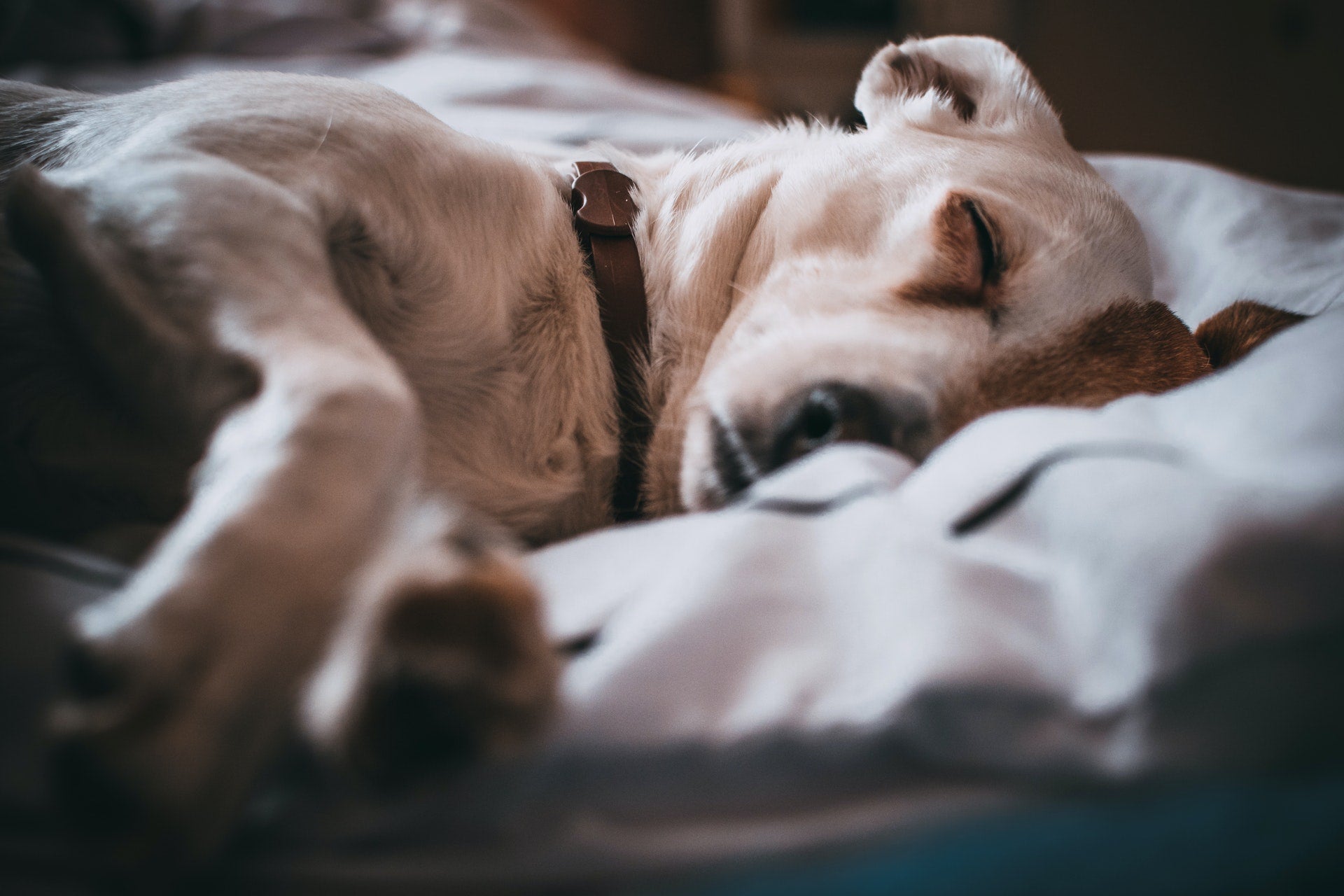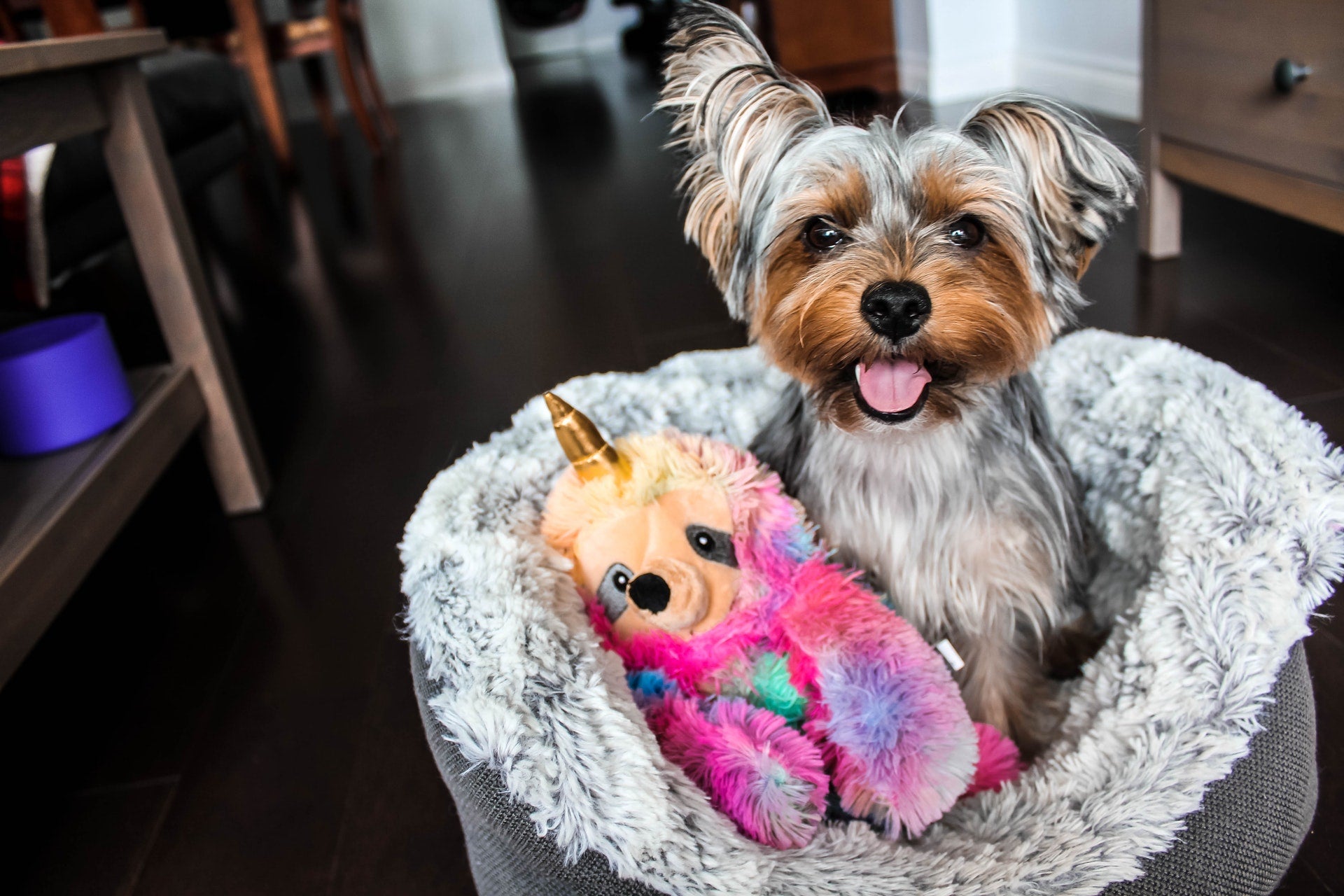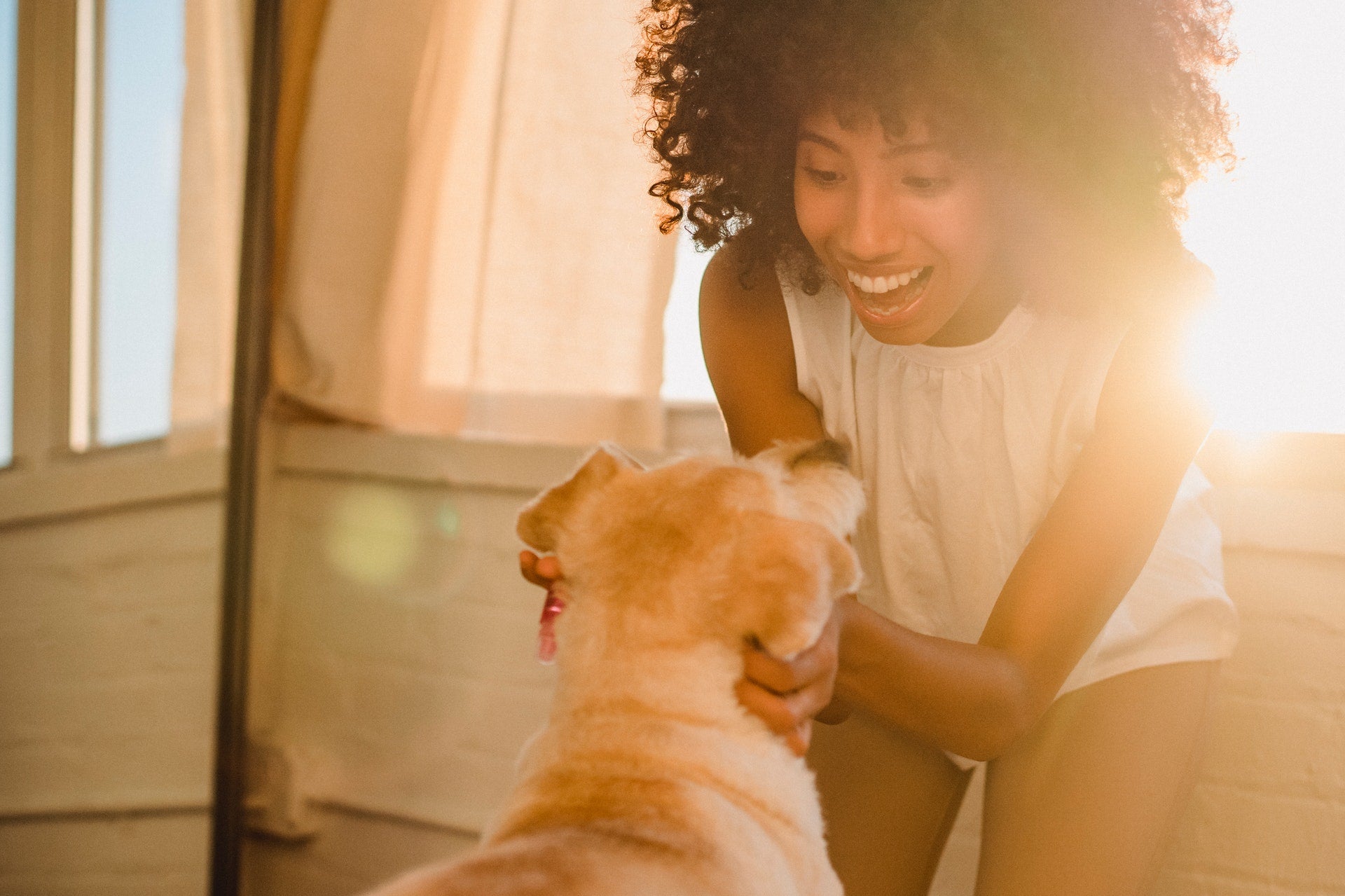Dogs live with us in a social community. They feel most comfortable together with "their" people. So it's no wonder that many dog owners have a bad conscience when they have to leave their four-legged friends alone or take them to a dog sitter. If the dog hasn't had enough time on a day like this anyway, this feeling is intensified. For example, you intuitively try to do your shopping faster. That's stressful. And it doesn't take much patience either. Long bowls, for example at the supermarket checkout, are annoying...
Being alone well planned is half the battle
Leaving the dog alone unprepared - that doesn't work at all. The four-legged friend has to learn to stay alone.
The dog cannot go everywhere
Your four-legged friend will accompany you for many years, and of course you can't always take them with you, for example to the supermarket or to the doctor. And there are dogs who don't like to be left alone, but who find it even worse to have to navigate the hustle and bustle of the city and are used to it. Therefore, systematically train your dog to stay alone. In the end, he will be happy and relaxed at home and you can lock the front door with a good feeling and go on your way. It is best to practice staying alone with the young dog. But even an older dog learns to stay relaxed at home.

This makes it easier to stay alone
Ensure further relaxation by always allowing the dog access to its basket so that it can always retreat to it. Many dogs also like to cuddle in bed or on the couch. At these points there are many scent marks from us, which at least for the moment leave a "we-feeling" for the four-legged friend. This helps many dogs to relax. If that doesn't bother you, leave your dog alone. If you object, protect your furniture so that the dog cannot use it.
Some dogs like to dig up potted plants when they're bored. Better swap the plants for a chew bone or toy for your four-legged friend to chew on. Chewing reduces stress and, as a useful tool, can support the feeling of relaxation. There are also dogs that feel lost in a large apartment. Some prefer to stay in only one or two rooms during our absence, others like to use the entire apartment. Match the size of the living area to the needs of your dog.

Exercise: stay alone
Shutting the door and walking away might be possible with one dog, but not all. We will introduce you to an exercise that is so small that you can easily practice it with any dog.
Get away from the dog in a relaxed manner
For this exercise you will need treats, a toy and of course your dog.
Aim of the exercise: You can ask your dog to sit down anywhere. He sits down voluntarily, learning that you will walk away. He can resolve the signal himself and devote himself to other things in a relaxed manner.
Exercise structure:
- Encourage your dog to sit down. Don't choose the already conditioned "sit" signal, which involves your dog remaining in the position until you remove the signal. Entice him into position with a treat, but don't elaborate on the process. Later, you'll give the signal a new name, such as "Banana." The dog learns to sit down on the word banana, but is allowed to stand up on its own if it takes too long. This brings clarity to the dog and does not destroy your "seat", which should always be followed by a release signal.
- When the dog sits, a treat is due as a reward.
- Fixing the dog with a "sit" ("down" or "stand" also works, of course) makes it easier for the dog not to run after you. Take a step away from him. Then take the same step back towards him. Motivate your four-legged friend to do something that is not directly related to you. You can also lay out toys that he is welcome to pounce on. Do not use the release signal here, otherwise your dog will always expect it in the future.
- Repeat the exercise a few times. Increase the distance and running angle to the dog. Turn around so that you can do the exercise even if you don't look him in the eye. Many dogs only endure exercise if they maintain eye contact with their human. Keep breaking contact and encourage him to do something without you. After all, he should also do the latter when he is alone.
- If this step works, go to other rooms and occupy yourself there briefly, come back and finish the sequence as described in the previous point. The distances and times of your absence are getting longer and longer over time. Go to the hallway, stairwell, kitchen, bathroom, basement, etc.
Come back, praise your dog and then everyone goes their separate ways.

- This is how you teach your dog a routine. You go away and everything stays fine. You come back, but don't bother with him. So the dog does not build up expectations, but has to keep himself busy.
With these steps, create a stress-free base where your dog learns that constantly chasing after you is a waste of energy and that the apartment won't collapse without you either. You confidently convey that it is normal to go separate ways at short notice.









